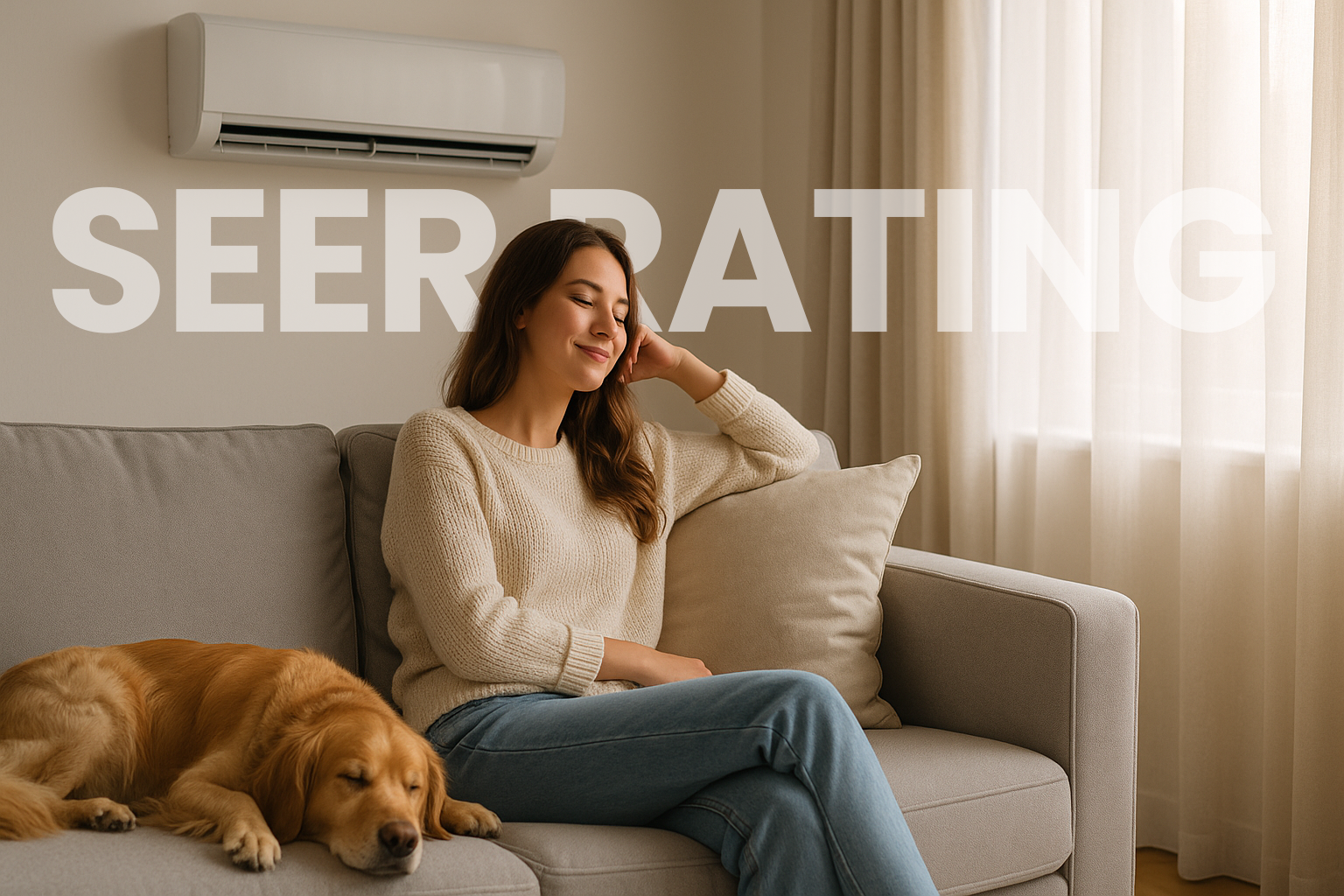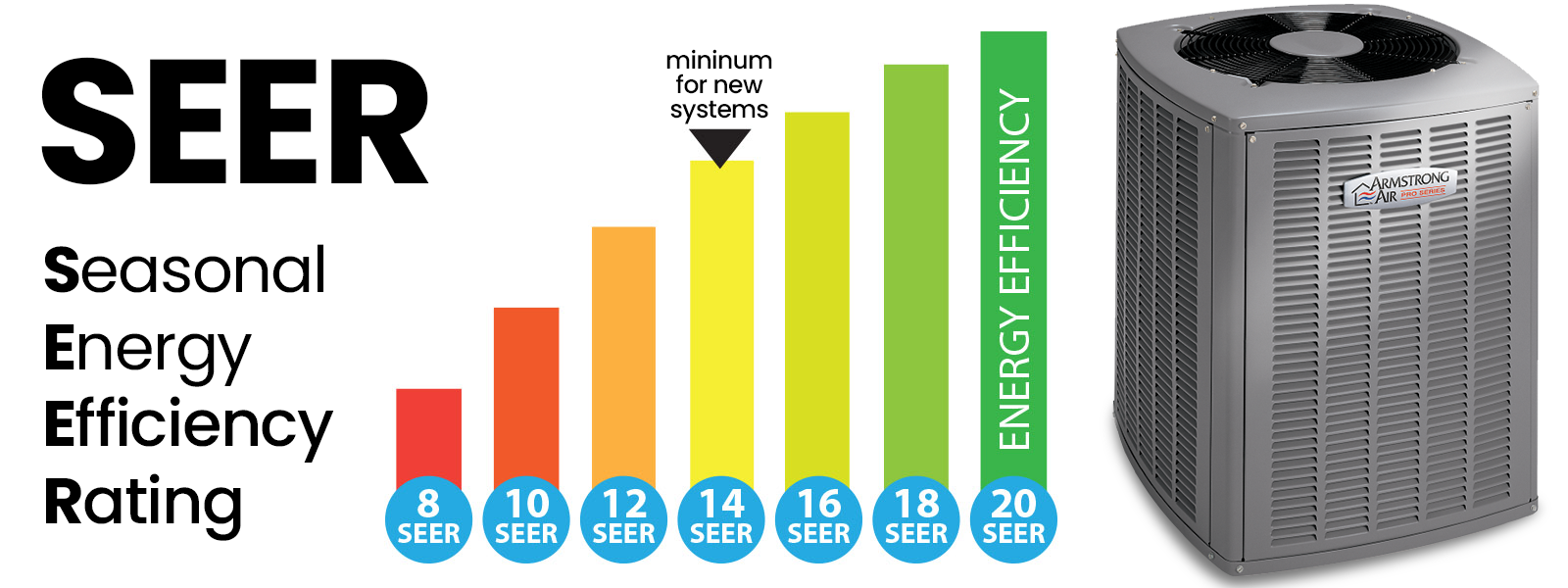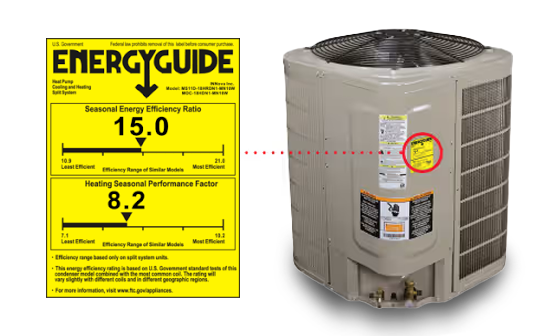
How to get SEER-iously comfortable!
If you’ve ever shopped for a heat pump, ductless mini-split, central air system, or even a full HVAC replacement, chances are you’ve heard the term SEER tossed around. But what does it really mean—and how does it affect your wallet?
Let’s break it down.
What Is a SEER Rating?
SEER stands for Seasonal Energy Efficiency Ratio. In simple terms, it indicates how efficiently an air conditioner or heat pump cools your home.
Think of SEER like miles per gallon (MPG) for your car. A higher MPG means your car goes farther on less fuel. The same idea applies here: the higher the SEER rating, the less energy your system needs to maintain a comfortable temperature in your home.
How SEER Ratings Save You Money
Let’s say your old A/C has a SEER of 10 (which is fairly common in older units), and your new system has a SEER of 16. That’s a 60% jump in efficiency.
If your cooling costs were $150 per month before, you might now spend closer to $90 per month. That’s $720 a year in savings—every single year.

How to Find Your Current SEER Rating
- Look at your outdoor unit: Check the yellow EnergyGuide label.
- Check the model number: Often, the number (like 13) in the model can indicate the SEER rating.
- Ask your HVAC tech: A professional can quickly tell you during a tune-up.

How to Choose the Right Heat Pump, Furnace, or Central Air Unit
- SEER 14+ minimum: If you’re in a warm climate, aim for SEER 16 or above.
- Long-term homeowners may find that SEER ratings of 18–20 offer better value over time.
- Climate matters: Heat pumps are great in milder areas. Cold climates benefit from a dual-fuel setup.
- Proper sizing: Avoid oversizing or undersizing. Get a load calculation.
Don’t Worry—We’ve Got Your Back! As a homeowner, you don’t need to stress about figuring out SEER ratings, sizing calculations, or rebates. That’s what we’re here for. Our experienced HVAC team will help you select the ideal system tailored to your home’s size, comfort requirements, and budget.
Contact us today to schedule a free estimate and let us make energy efficiency simple.
Rebates & Tax Credits – Free Money for Upgrading
Upgrading to high-efficiency equipment may qualify you for serious savings from the government and utilities.
Federal Rebates & Tax Credits
- Energy Efficient Home Improvement Credit (IRC §25C):
• 30% of qualified costs (includes equipment + installation)
• Up to $2,000/year for heat pumps, heat-pump water heaters, biomass stoves/boilers
• Up to $1,200/year for other eligible upgrades (e.g., central A/C, furnaces, insulation, doors, windows, home energy audits)
• Annual cap of $3,200 total
IRS Energy Efficient Home Improvement Credit - Residential Clean Energy Credit:
• 30% of installed costs (no annual cap for most systems) through 2032
• Includes geothermal heat pumps, solar, wind, fuel cells, and battery storage
ENERGY STAR Clean Energy Credit details - New “Qualified Manufacturer” requirement:
• Starting Jan 1, 2025, eligible HVAC equipment must be produced by a manufacturer registered with the IRS and include a PIN on your tax return - Central A/C minimum specs (effective 2025):
• Split systems require SEER2 ≥17 & EER2 ≥12
• Packaged systems require SEER2 ≥16 & EER2 ≥11.5 - High-efficiency furnaces:
• ENERGY STAR-certified gas furnaces ≥97% AFUE qualify
• Dual-fuel installs (furnace + heat pump) can stack additional tax credits.
📝 How to Claim: Use IRS Form 5695 when filing your federal tax return. Keep invoices, product specs, and PIN info handy.
Note: This credit is non-refundable: it lowers your tax bill but won’t create a refund beyond what you owe. Unused credit can’t be carried forward.
⏳ Timing matters: These credits apply to qualifying installations from January 1, 2023, through Dec 31, 2032. Install by 2025 to avoid new manufacturing requirements.
ENERGY STAR Tax Credit Info
- Energy Efficient Home Improvement Credit (IRC §25C):
• Save up to $2,000/year on heat pumps, heat‑pump water heaters, biomass stoves/boilers
• Plus up to $1,200/year on other qualifying improvements (furnaces, central A/C, insulation, windows, doors, audits)
• Claim 30% of the total costs for installations done between January 1, 2023, and December 31, 2032
ENERGY STAR – Federal Tax Credit Info - Residential Clean Energy Credit:
• 30% credit with no annual cap for geothermal heat pumps, solar, wind, battery storage – through 2032
ENERGY STAR – Clean Energy Credit - Manufacturer PIN Requirement (2025+):
• Starting Jan 1, 2025, to qualify, HVAC equipment must be from a qualified manufacturer and include a unique PIN on your tax return - Minimum Efficiency Standards:
• Heat pumps and central A/C must meet Consortium for Energy Efficiency (CEE) tier 1 standards – typically SEER2≥15.2, EER2≥11.7 (split systems).
How to Claim: Use IRS Form 5695 when filing your federal tax return. Include product info, costs, and PIN. Keep all invoices and Energy STAR/CEE documentation.
Note: These are non-refundable credits—they reduce your tax owed but won’t generate excess refunds. Unused credit cannot be carried forward.
Pennsylvania Utility Rebates
- EnergySavePA (FirstEnergy utilities) – Cash rebates on ENERGY STAR® HVAC equipment & services (A/C, heat pumps, tune‑ups), with income‑qualified bonus +$25
- Columbia Gas WarmWise Rebate Program – $400 for high‑efficiency furnaces, $2,000 for gas‑fired heat pumps, plus smart thermostats, insulation, and air sealing.
- PA DEP IRA Clean Energy Rebates – Coming early 2025: low‑to‑moderate income rebates for heat pumps, appliance electrification, home upgrades.
- PA Utility Incentives Summary (Energy Efficiency Alliance)
Maryland Rebates & Tax Credits
- Maryland IRA Tax Credits & Rebates – Includes tax credits for heat pumps, insulation, electrification, and more
- EmPOWER MD Home Performance with ENERGY STAR® + Electrification Rebates – Up to $15,000 back when switching from gas/oil to electric heat pumps (incl. water heaters)
- BGE Smart Energy Savers Program – Rebates on smart thermostats, heat pump water heaters, HVAC upgrades, and insulation.
- Utility Rebates Guide (Pepco, BGE, Delmarva, Potomac Edison) – Up to $2,000 for heat pumps, $600 for furnaces/central air, plus tax credits.
Delaware Rebates & Tax Credits
- DE Home Energy Rebates (IRA-funded) – $500–8,000+ for heat pumps, insulation, air sealing, appliances; targeted at income-qualified households.
- Energize Delaware – HPwES Rebates – Up to $6,750 total for energy upgrades, incl. air sealing, insulation & heat pumps.
- Energize Delaware – Bonus Incentives – Includes 25% bonus on home performance rebates & up to $1,400 for top-tier heat pumps, $1,100 for water heaters.
- Delaware HVAC Tax Rebates Guide – 30% federal rebate: up to $2,000 for heat pumps, $600 for central A/C and furnaces.
Pro Tip: You can often stack federal tax credits with both state and utility rebates to maximize your savings and lower upfront costs!
Final Thoughts
SEER isn’t just some technical term—it’s your ticket to more comfort and lower bills. And with today’s rebates and tax incentives, upgrading has never been more affordable.
If you’re ready to make a move, Hillside is here to help you choose the right system for your home and budget—no pressure, just straight answers.
Schedule a FREE estimate on a high-seer A/C system at by calling us at 302.738.4144 (DE & PA) or 410.398.2146 (MD)!
Stay cool (or warm),
Your Trusted HVAC Pro